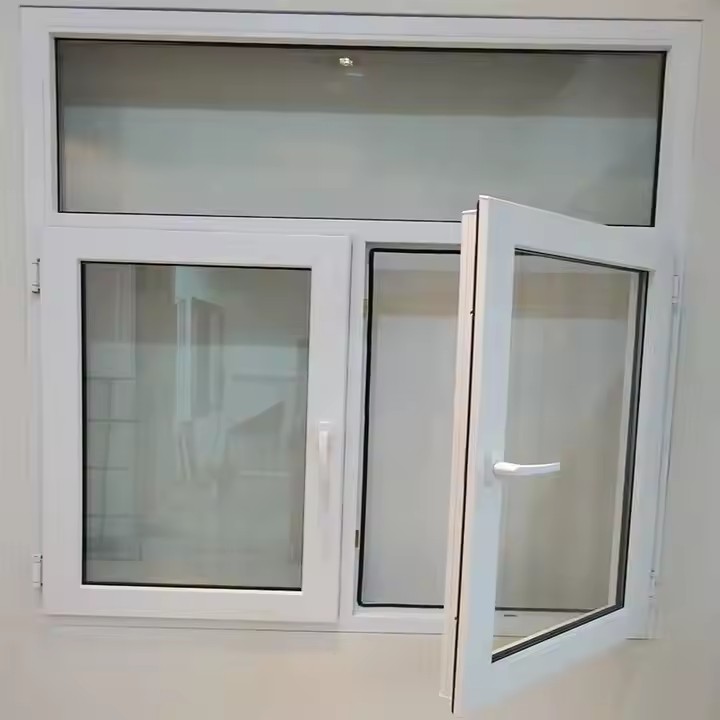- Technology-Driven Innovation: From Follower to Global Leader
China’s door and window industry has evolved from traditional manufacturing to a technology-led sector, achieving major breakthroughs in performance and innovation.
World-Leading Energy Efficiency
Driven by China’s “Dual Carbon” policy, manufacturers have pioneered key technologies such as Low-E coated glass and vacuum glass. Combined with multi-chamber thermal break aluminum profiles and composite sealing structures, these systems achieve remarkable energy savings.
For instance, the heat transfer coefficient (U-value) of mainstream thermal break aluminum windows can reach as low as 1.8W/(㎡·K), outperforming the EU standard of ≤2.8W/(㎡·K). This helps reduce heating energy consumption by over 50% in northern regions and air-conditioning load by about 30% in the south—making them suitable for China’s diverse climates.

Integration of Smart Technology
Chinese doors and windows now widely adopt IoT applications. Examples include smart entry doors with facial recognition that can trigger lighting systems, and electric skylights with wind and rain sensors that close automatically during bad weather.
Some high-end windows even feature temperature and smoke sensors that automatically open for ventilation in case of fire—placing Chinese products among the world’s most advanced in practical smart integration.
Strong Structural Adaptability
To meet the needs of high-rise buildings and typhoon-prone regions, Chinese manufacturers have developed windows with wind pressure resistance up to Grade 9, capable of withstanding Category 12 typhoons.
For old building renovations, “non-destructive installation” designs allow replacements without damaging walls—minimizing disturbance and improving convenience. This adaptability gives Chinese windows a unique edge in varied usage scenarios.
- Wide Product Range: Covering Every Application Scenario
Thanks to a highly developed industrial chain, Chinese doors and windows form one of the most comprehensive product systems in the world—serving both residential and commercial markets across all price segments.
Residential Applications:
Homes: Options include thermal break aluminum, system windows, and aluminum-clad wood windows.
Thermal break aluminum offers high value and easy maintenance.
Aluminum-clad wood combines the warmth of natural wood with the durability of aluminum, fitting diverse interior styles.
Entry doors range from Grade A anti-theft steel doors (≥30 min pry resistance) to cast aluminum and solid wood doors, balancing security and aesthetics.
Old Building Renovation: Slim-frame sliding windows increase daylight without expanding wall openings, while soundproof glass (reducing noise by over 35 dB) improves comfort in older homes.

Commercial Applications:
Shopping Malls / Office Buildings: Custom extra-large glass façades (up to 10㎡ per panel) use ultra-clear glass for transparency, combined with motorized opening systems for ventilation. Automatic revolving doors with infrared sensors increase entry efficiency by 40%.
Specialized Use:
Hospitals: Antibacterial door and window surfaces (≥99% antibacterial rate).
Laboratories: Corrosion-resistant PVC or aluminum windows.
Cold-chain logistics: Thermal doors with Grade 1 national insulation standards.
- Cost-Effectiveness: Efficiency from the Industrial Chain Advantage
China’s complete supply chain provides both technological and cost advantages, making its products globally competitive in value.
Vertical Integration Reduces Costs
Regions such as Foshan (Guangdong) and Linqu (Shandong) have established full industrial clusters covering raw materials, manufacturing, assembly, and after-sales. Many companies produce their own aluminum profiles, cutting raw material costs by 20–30% compared to imports and passing savings to customers.
Mass Production Improves Efficiency
Leading brands use fully automated production lines (e.g., HOMAG CNC systems from Germany), achieving daily capacities of 500 doors / 1,000㎡ windows per line. This large-scale production lowers labor and energy costs, allowing Chinese system windows to sell for only half to two-thirds of comparable European products.
For example, a Chinese premium thermal break window typically costs ¥800–1,200 per ㎡, while European equivalents often exceed ¥2,000 per ㎡.
Comprehensive After-Sales Service
Chinese manufacturers maintain extensive after-sales networks, offering free measurement, free installation, and up to 5-year warranties. Many brands also provide regular maintenance (e.g., cleaning and hardware adjustment), greatly reducing long-term usage costs compared with slow and expensive overseas service systems.
- Quality and Compliance: Building Trust Through Standards
China’s door and window standards have reached international levels, ensuring consistent quality and reliability.
National Standards Drive Quality Upgrades
According to GB 55015-2021: General Code for Building Energy Conservation and Renewable Energy Utilization, door and window performance in energy efficiency, sound insulation, and waterproofing must meet strict thresholds.
Manufacturers must pass CCC certification and Energy Efficiency Labeling before market entry.
For example:
Water tightness: Grade 3 or above (resists heavy rain).
Air tightness: Grade 6 or above (minimizes air leakage).
Such rigorous standards continuously push the industry toward higher quality and durability.

